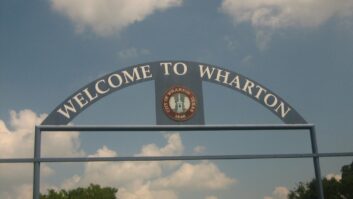Next move in the AM revitalization effort:
The FCC has proposed revised interference protections for Class A AM stations in the United States. One proposal is for daytime hours, two are for protection during the “critical hours” periods and two are for protection of Class A AM stations at night.
The question of what to do about interference rules concerning big Class A signals has been a notable one. Class A stations operate on clear channels with 10 to 50 kW.
“These alternative proposals are designed to preserve some of Class A stations’ wide area coverage, while relieving more local stations of their current obligation to protect Class A stations from interference,” the commission wrote in adopting its Second Further Notice of Proposed Rulemaking. “Our proposals should enable local stations to provide greater and improved local service to their communities, especially at night.”
As characterized by Commissioner Michael O’Rielly, “In this Second Further Notice of Proposed Rule Making, the commission is considering further reducing the contour by which Class A stations are protected at night, in order to represent a more realistic view of where a listenable signal is, and, therefore, actual listeners. At the same time, the commission also has proposed to enhance Class A stations’ co-channel interference protections, thereby reducing the potential impact on Class A stations’ nighttime service.”
Here are the proposals on which the FCC is asking input:
Daytime hours proposal: During daytime hours, Class A AM stations would be protected to their 0.5 mV/m daytime groundwave contour, from both co-channel and first-adjacent channel stations;
Critical hours proposals: Alternative 1: During critical hours, Class A AM stations would be afforded no protection from other AM stations; or Alternative 2: During critical hours, Class A AM stations would be protected to their 0.5 mV/m groundwave contour;
Nighttime hours proposals: Alternative 1: During nighttime hours, there may be no overlap between a Class A AM station’s 0.5 mV/m nighttime groundwave contour and any interfering AM station’s 0.025 mV/m 10% skywave contour (calculated using the single station method); or Alternative 2: During nighttime hours, Class A AM stations would be protected from other AM stations in the same manner as Class B AM stations are protected, that is, interference may not be increased above the greater of the 0.5 mV/m nighttime groundwave contour or the 50% exclusion RSS NIF level (calculated using the multiple station method).
Commissioner O’Rielly wrote. “If true, I would be more sympathetic to this change as it wouldn’t alter the realistic reach or expectations of those holding existing licenses. I appreciate the chairman accommodating my request to clarify that, at this time, this is not a universally held viewpoint. I hope the record will reflect a consensus by engineers on how far a listenable signal extends. I will be hesitant to support a final order on this proposal without such consensus.” But he favored continuing the process to foster discussion of these and other questions.
The FCC is asking for comments on those ideas as well as any effects on the functioning of the Emergency Alert and Integrated Public Alert and Warning Systems (EAS and IPAWS).
Though it is not revising its proposals for daytime protection for Class B, C, and D stations or for changes to nighttime root-sum-square (RSS) calculation methodology, it also wants input about the impact on those of these latest proposals to modify Class A protections.










